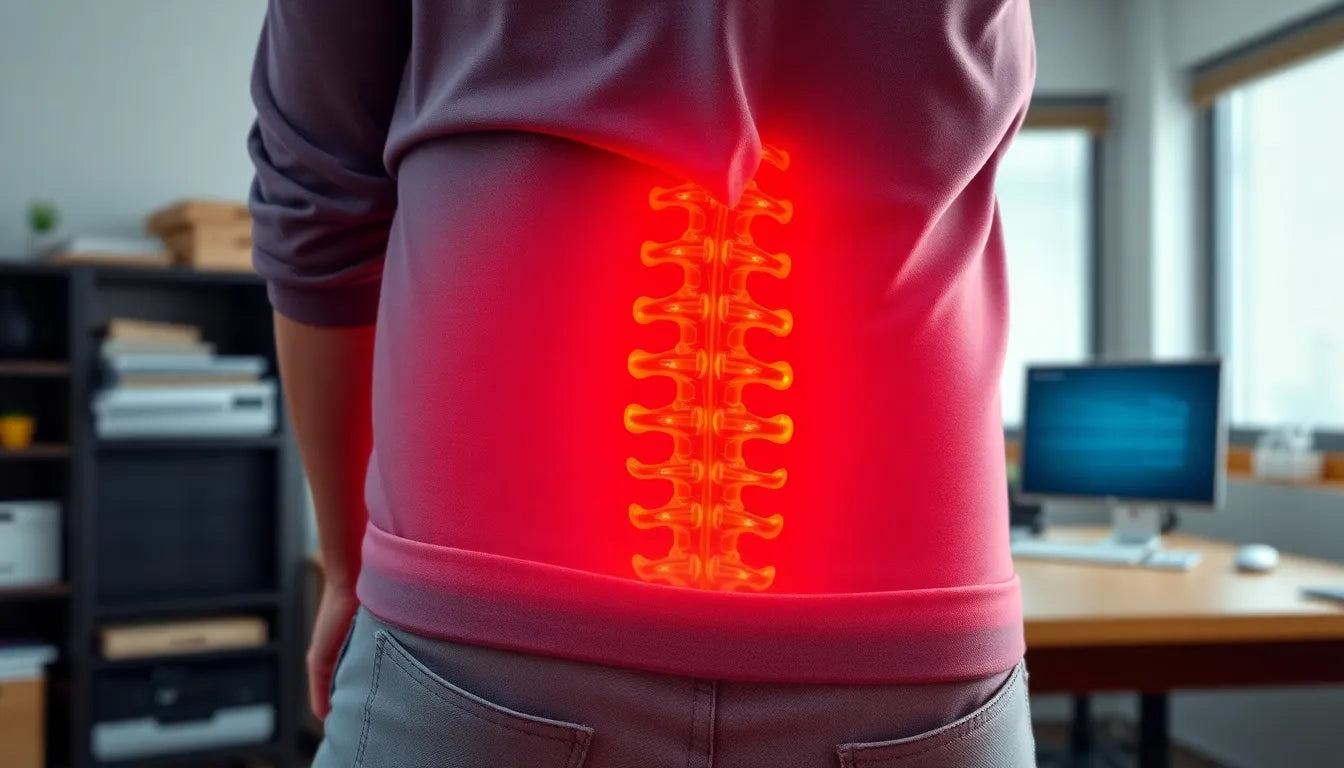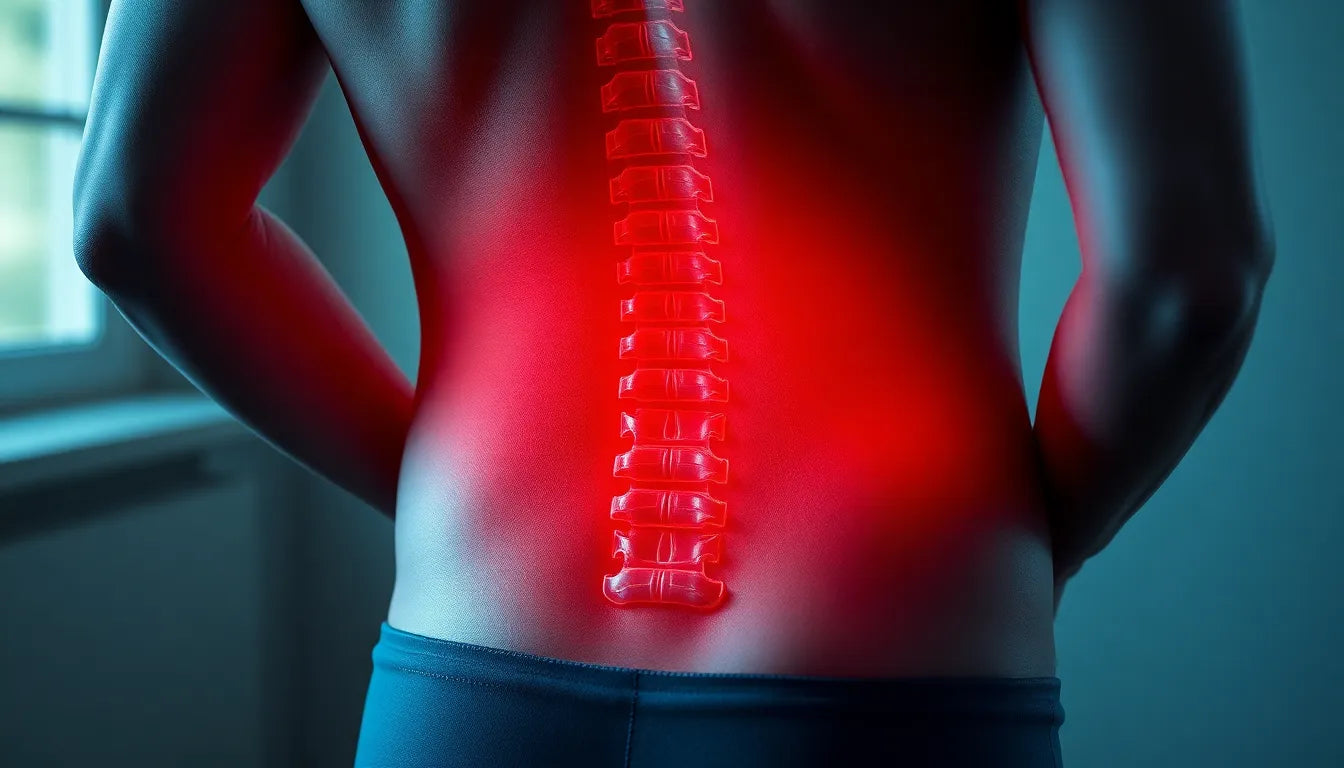Muscle knots are a common yet perplexing experience for many individuals, often sparking curiosity and concern. These mysterious lumps can suddenly appear, causing discomfort and prompting discussions among those who regularly face muscle pain. Despite their prevalence, the true nature of muscle knots remains a topic of intrigue for many.
Understanding muscle knots: myofascial trigger points
Muscle knots, medically referred to as "myofascial trigger points," are small, sensitive areas within the muscle that feel like tight nodules or lumps. These knots are not only a common occurrence but also a significant contributor to muscle pain and discomfort that can affect daily life. They are typically found in areas prone to stress and tension, such as the neck, back, and shoulders, and can impact one's ability to move freely and comfortably.
The impact of muscle knots on daily life
The presence of muscle knots can lead to a range of sensations that vary in intensity and duration. For some, they may cause mild discomfort, while for others, they can result in severe pain and restricted movement. This variability in sensation makes understanding and identifying muscle knots crucial for effective management and prevention. By gaining insight into how these knots feel, individuals can better address their symptoms and seek appropriate relief measures.
The purpose of exploring muscle knot sensations
This blog post aims to delve into the intricacies of what muscle knots truly feel like. By examining the sensations associated with these myofascial trigger points, we hope to provide a clearer understanding that can aid in the effective management and prevention of muscle knots. Recognizing the specific feelings and characteristics of muscle knots is an essential step in developing strategies to alleviate pain and improve overall muscle health. As we explore this topic further, you'll gain valuable insights into identifying and addressing muscle knots in a way that promotes comfort and well-being.
What does a muscle knot feel like?
Muscle knots are often described as small, tender lumps or nodules that can be felt beneath the skin. These areas of tension are typically perceived as tight and sore spots within the muscle tissue. When palpated, they may feel like stiff bands of muscle with a hard knob in the center, sometimes likened to a marble along a tendon or ligament. This sensation is a hallmark of what many experience when dealing with muscle knots.
Pain characteristics of muscle knots
The pain associated with muscle knots can vary significantly, ranging from a mild annoyance to a deeply intense discomfort. Active muscle knots are particularly notorious for causing continuous pain even without direct pressure. This type of pain can be described as deep and penetrating, often disrupting daily activities and sleep. On the other hand, latent muscle knots are usually only painful when pressed, yet they can still cause stiffness and limited range of motion.
One of the intriguing aspects of muscle knots is their ability to cause referred pain. This means that while the knot itself may be located in one area, the pain can radiate to other parts of the body. For instance, a knot in the shoulder might cause pain that travels down the arm or into the neck. Understanding these pain patterns is crucial for effective treatment and relief.
Common locations of muscle knots
Muscle knots can occur in various parts of the body, but they are most commonly found in areas that are frequently subjected to stress and tension. The back, shoulders, and neck are primary hotspots for these knots, often due to poor posture or repetitive strain. Additionally, muscle knots can be found in the calf muscles, lower back, mid-back, and even the shins.
To better visualize these common locations, imagine a diagram illustrating these areas. For example, the upper back and shoulders are often depicted with clusters of potential knot sites, highlighting the regions most prone to tension. Such visual aids can be helpful in identifying where muscle knots are likely to form.
Associated symptoms of muscle knots
Beyond the immediate pain and discomfort, muscle knots can lead to a range of associated symptoms. Individuals may experience general numbness or tingling in the affected area, which can sometimes mimic nerve pain. This is particularly common when knots form near nerve pathways, causing additional sensations that can be concerning.
Another significant symptom is a decreased range of motion. Muscle knots can make it difficult to move the affected muscle freely, leading to stiffness and limited flexibility. This can impact daily activities, from simple tasks like reaching for an item on a shelf to more complex movements required in physical activities or sports.
Furthermore, the phenomenon of referred pain can result in specific symptoms depending on the knot's location. For example, knots in the neck and shoulders might lead to headaches or dizziness, while those in the jaw area could cause jaw pain or contribute to tension headaches. Recognizing these symptoms is vital for identifying muscle knots and seeking appropriate treatment.
In conclusion, understanding the sensations and symptoms associated with muscle knots is a crucial step in managing and preventing them. By recognizing the physical characteristics, pain patterns, and common locations, individuals can better address their muscle health and seek effective relief strategies. As we continue to explore this topic, further insights into causes, self-assessment, and prevention will be discussed to aid in maintaining optimal muscle function and comfort.
Understanding the causes of muscle knots
Muscle knots, or myofascial trigger points, often develop due to a combination of factors, primarily related to posture, workplace ergonomics, and physical strain. Poor posture, especially when sitting for extended periods, can lead to the development of muscle knots as certain muscles are overworked while others are underused. This imbalance creates tension and stress in specific areas, such as the neck, shoulders, and back, making them prime locations for muscle knots to form.
Additionally, workplace ergonomics play a crucial role in muscle health. An improperly set up workstation can force the body into awkward positions, leading to muscle strain and the eventual formation of knots. Regularly engaging in repetitive motions or maintaining static positions can exacerbate this issue, further contributing to muscle tension and discomfort.
Self-assessment: Identifying muscle knots
To determine if you have muscle knots, begin by gently palpating the areas where they commonly occur, such as the neck, shoulders, and back. Look for small, tender lumps or nodules that feel like tight bands of muscle. These areas may be painful to the touch or cause discomfort when pressure is applied. It's important to distinguish muscle knots from other conditions, such as joint or nerve pain, by noting the specific sensation and location of the discomfort.
If you're unsure whether you're dealing with a muscle knot, consider consulting a healthcare professional or a physical therapist. They can provide a more accurate diagnosis and recommend appropriate treatment options.
Ergonomic solutions for muscle knot prevention
Preventing muscle knots begins with addressing ergonomic factors in your daily environment. Consider investing in ergonomic aids, such as adjustable chairs, desks, and computer accessories, to promote proper posture and reduce strain on your muscles. Anodyne offers a range of products designed to support muscle health by enhancing workplace ergonomics, helping to alleviate and prevent the formation of muscle knots.
In addition to ergonomic adjustments, incorporating regular movement and stretching into your routine can significantly reduce the risk of developing muscle knots. Simple exercises and stretches targeting common problem areas can help maintain muscle flexibility and reduce tension.
Long-term prevention strategies
Maintaining proper workspace ergonomics and practicing good body mechanics are essential for long-term muscle health. Regularly assess your posture and make necessary adjustments to your workspace to ensure comfort and support. Incorporate exercises that strengthen the core and improve flexibility, as these can help prevent muscle imbalances and reduce the likelihood of muscle knot formation.
Furthermore, staying hydrated and managing stress levels are important components of muscle health. Adequate hydration supports muscle function, while stress management techniques, such as mindfulness or yoga, can help reduce overall muscle tension.
Frequently Asked Questions
What are muscle knots and why do they form?
Muscle knots, also known as myofascial trigger points, are small, sensitive areas within the muscle that feel like tight nodules. They form due to factors such as poor posture, repetitive strain, and inadequate ergonomics, leading to muscle tension and stress.
How can I tell if I have a muscle knot?
To identify a muscle knot, gently palpate common areas like the neck, shoulders, and back. Look for tender lumps or nodules that feel tight and may cause discomfort when pressure is applied. If unsure, consult a healthcare professional for a proper diagnosis.
What are effective treatments for muscle knots?
Treatment options for muscle knots include massage therapy, stretching exercises, and ergonomic adjustments. Applying heat or cold therapy can also provide relief. In some cases, physical therapy may be recommended to address underlying issues.
Can muscle knots lead to other health issues?
If left untreated, muscle knots can cause chronic pain and lead to compensatory movement patterns, potentially resulting in additional musculoskeletal issues. They may also contribute to stress and discomfort, affecting overall well-being.
How can I prevent muscle knots from recurring?
Prevent muscle knots by maintaining good posture, optimizing workspace ergonomics, and incorporating regular stretching and strengthening exercises into your routine. Staying hydrated and managing stress levels are also key components of prevention.
Sources
- MedicalNewsToday. (2020). "What are muscle knots?"
- WebMD. (2021). "What to Know About Muscle Knots."
- Advanced Physical Therapy. (2022). "Muscle Knots and Physical Therapy."
- Chiropractic.ca. (2023). "Muscle Knots and Chiropractic Care."
- NorCalPain. (2022). "Trigger Points and Pain Management."
- Brisbane Spine Clinic. (2023). "Muscle Knots in Different Body Parts."


















